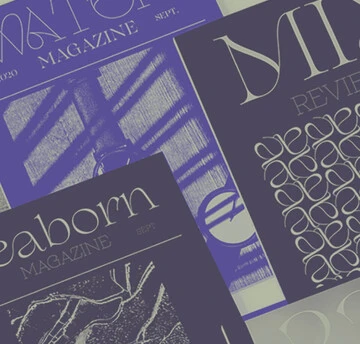Good Type part 7: Good type is a global traveler.
More than ever, type needs to travel. Doing business around the world is a necessity for many brands, meaning typefaces need to speak enough languages to work across the globe.
But it’s not a straightforward solution, and taking your brand’s tone of voice and messaging into new markets can be a daunting task. There’s the sheer number of languages spoken around the world to consider—for example, Singapore has four official languages, South Africa has 11, and there’s 22 spoken across India.
Translation isn’t necessarily simple either, with jargon, humor and slang all carrying their own local and cultural idiosyncrasies. Even color can be a divisive topic, which is why the McDonald’s website isn’t a consistent red across the world (in China its black, and in Italy, green).
Fonts that support multiple languages are equally complex. Type designers operate in a niche area of knowledge and expertise, but it’s often restricted to their native language. New languages pose a multitude of challenges, not just learning the vocabulary, but also considering the direction that words are read. By the time we’re adults this sense of right-to-left or left-to-right is fixed within us, with our directional bias affecting how we perceive the world, how we portray it, and even how we expect things like websites and electronics to work.
Considering the complexities of language, it’s no surprise that typefaces supporting vast numbers of languages—such as Akira Kobayashi’s SST, which covers 93 languages and eight scripts—are the exception and not the rule. Designers may be able to find typefaces that support a few extra languages and character sets, but when it comes to doing global business, font pairing is often the best solution.
It’s a much-debated topic, and one that many designers feel apprehensive about. Director of Product Design at Monotype, Jamie Neely, says that choosing a complimentary font is often about relying on your designer’s instinct. Forget font classifications and technical aspects, and explore the form of the typeface itself.
For example, something like Futura, which has very little variation between thick and thin, would work well with something like Tazugane—which shows similar shapes in Japanese. A typeface like FF Meta, which is quite compressed, could partner well with an Arabic typeface that’s equally compressed. Paying attention to the rhythm of a typeface can also help find a partner design that will harmonize with it in another language.
Neely also recommends simply asking the typeface designer themselves, who will have often be able to recommend a complimentary companion. For example, Nadine Chahine suggests designers use Matthew Carter’s Carter, if they need a Latin counterpart for her Arabic Amariya typeface. Practically speaking, if designers are unsure about exactly what a typeface offers, they can use a tool like Underware.nl – which analyses a font and reports back on exactly what language support it has.
Stay tuned for more from the Good Type series. Video recorded live at Adobe Max 2017.











